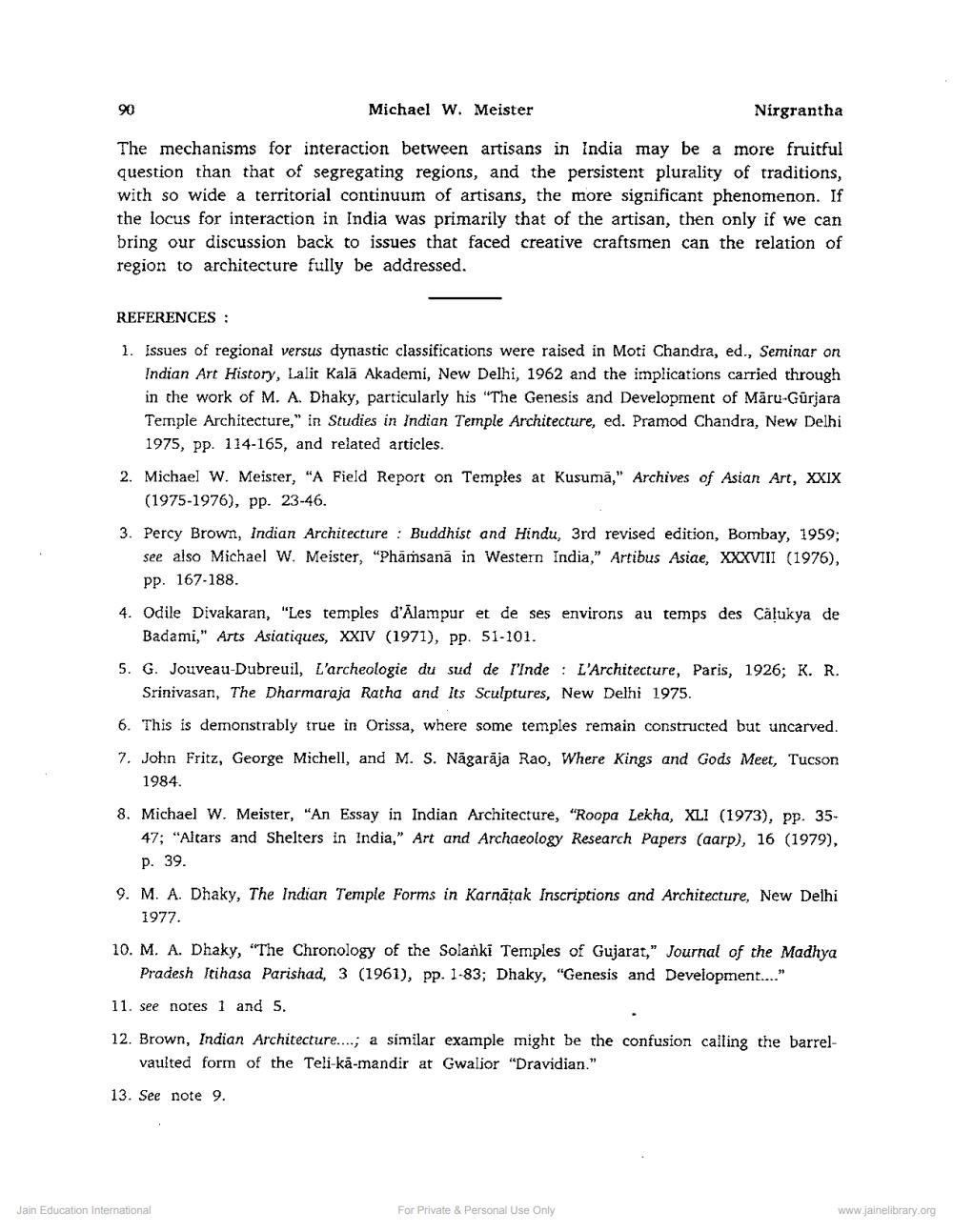Book Title: Regions and Indian Architectures Author(s): Michael W Meister Publisher: Z_Nirgrantha_1_022701.pdf and Nirgrantha_2_022702.pdf and Nirgrantha_3_022703.pdf View full book textPage 4
________________ 90 Michael W. Meister Nirgrantha The mechanisms for interaction between artisans in India may be a more fruitful question than that of segregating regions, and the persistent plurality of traditions, with so wide a territorial continuum of artisans, the more significant phenomenon. If the locus for interaction in India was primarily that of the artisan, then only if we can bring our discussion back to issues that faced creative craftsmen can the relation of region to architecture fully be addressed. REFERENCES : 1. Issues of regional versus dynastic classifications were raised in Moti Chandra, ed., Seminar on Indian Art History, Lalit Kalā Akademi, New Delhi, 1962 and the implications carried through in the work of M. A. Dhaky, particularly his "The Genesis and Development of Māru-Gurjara Temple Architecture," in Studies in Indian Temple Architecture, ed. Pramod Chandra, New Delhi 1975, pp. 114-165, and related articles. 2. Michael W. Meister, "A Field Report on Temples at Kusumā," Archives of Asian Art, XXIX (1975-1976), pp. 23-46. 3. Percy Brown, Indian Architecture : Buddhist and Hindu, 3rd revised edition, Bombay, 1959; see also Michael W. Meister, "Phāṁsana in Western India," Artibus Asiae, XXXVIII (1976), pp. 167-188. 4. Odile Divakaran, "Les temples d'Alampur et de ses environs au temps des Calukya de Badami," Arts Asiatiques, XXIV (1971), pp. 51-101. 5. G. Jouveau-Dubreuil, L'archeologie du sud de l'Inde : L'Architecture, Paris, 1926; K. R. Srinivasan, The Dharmaraja Ratha and its Sculptures, New Delhi 1975. 6. This is demonstrably true in Orissa, where some temples remain constructed but uncarved. 7. John Fritz, George Michell, and M. S. Nägarāja Rao, Where Kings and Gods Meet, Tucson 1984. 8. Michael W. Meister, "An Essay in Indian Architecture, "Roopa Lekha, XLI (1973), pp. 35 47; "Altars and Shelters in India," Art and Archaeology Research Papers (aarp), 16 (1979), p. 39. 9. M. A. Dhaky, The Indian Temple Forms in Karnātak Inscriptions and Architecture, New Delhi 1977. 10. M. A. Dhaky, "The Chronology of the Solanki Temples of Gujarat," Journal of the Madhya Pradesh Itihasa Parishad, 3 (1961), pp. 1-83; Dhaky, "Genesis and Development..." 11. see notes 1 and 5. 12. Brown, Indian Architecture...., a similar example might be the confusion calling the barrel vaulted form of the Teli-kā-mandir at Gwalior "Dravidian." 13. See note 9. Jain Education International For Private & Personal Use Only www.jainelibrary.orgPage Navigation
1 2 3 4 5 6 7 8
